Blog
Off Grid Solar System Australia – Basics Explained and Buyers Guide
What is the technology known as photovoltaics (PV), and how does it fit in with the off grid solar system Australia? Solar energy can be converted into electrical energy using PV materials and equipment. A single photovoltaic (PV) device is referred to as a cell. A single photovoltaic (PV) cell is typically relatively small and generates only around 1 or 2 watts of power. In most cases, the thickness of these cells is smaller than that of four human hairs, and they are constructed out of a variety of semiconductor materials. For cells to endure the elements for a significant amount of time, they are encased in polymers and/or glass and sandwiched between two layers of protection.

Because of its modular design, photovoltaic (PV) systems can be constructed to fulfil virtually any requirement for electric power, regardless of their magnitude. Increasing the amount of electricity generated by PV cells is frequently chained together to form bigger units referred to as modules or panels. Modules may be utilised singularly, or multiple modules may be joined together to form arrays. The final step in installing a complete PV system is to connect one or more arrays to the local power grid.
We break systems down into several different types of subsystems. PV systems consist of many components, one of which is the photovoltaic modules and arrays. Systems often include mountings that point panels towards the sun. The components take the direct-current (DC) produced by modules and convert it to the alternating-current (AC) electricity used to power your home appliances.
Solar Photovoltaic Cell Basics
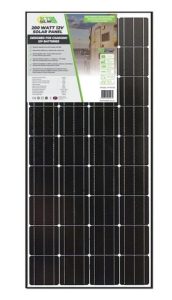
When light is shone on a photovoltaic (PV) cell, also known as a solar cell. Light can be reflected, absorbed, or let flow entirely through the cell. The photovoltaic cell is made of semiconductor material. The word “semi” indicates that the material can conduct electricity more effectively than an insulator. They are not as effective as a good conductor, such as a metal. Solar photovoltaic (PV) cells can be constructed from various semiconducting materials.
The energy of the light is taken in by the semiconductor when it is subjected to light. This energy is then transferred to the electrons, negatively charged particles found in the material. This additional energy makes it possible for electrons to move as part of an electrical current through the material. This current is extracted through conductive metal contacts, which are the lines that look like a grid on solar cells. Once extracted, this current can be used to power your home and the rest of the electric grid.
PV cells determine the amount of electricity generated
It is possible to measure the efficiency of a photovoltaic (PV) cell by comparing the amount of electrical power produced to the amount of energy produced by light shining on the cell. This comparison shows how well the cell can convert energy from one form to another. The qualities of the available light (such as its intensity and wavelengths) and the many performance attributes of the PV cell determine the amount of electricity generated by using PV cells.
PV semiconductors are used in photovoltaic cells. The bandgap of a PV semiconductor is an essential feature since it reveals what wavelengths of light can be absorbed. Then is converted into energy. Suppose the semiconductor’s bandgap corresponds to the wavelengths of light that shine on the PV cell. In that case, the PV cell will use all of the available energy effectively and efficiently.

Silicon
Silicon is by far the most common semiconducting material utilised in solar cells. It accounts for around 95 per cent of the modules sold today. In addition to this, it is the substance found on Earth in the second-highest abundance (after oxygen).
It is the semiconductor most frequently utilised in computer chips. Crystalline silicon cells are formed when individual silicon atoms are linked to one another to create a crystal lattice. The use of this lattice, which gives a structured structure, results in a more effective conversion of light into energy.
Solar cells now produced out of silicon have the benefits of high efficiency, low cost, and a long lifetime. It is anticipated that modules will have a lifespan of at least 25 years and generate over 80 per cent of the power they did when they were first manufactured.
PEROVSKITE PHOTOVOLTAICS
Perovskite solar cells are a form of thin-film cell and get their name from the distinctive crystal structure present in these cells. These cells are constructed using layers of materials that are printed, coated, or vacuum-deposited onto an underlying support layer known as the substrate. These three methods achieve a uniform appearance in the finished product.
They typically have a facile assembly process and can achieve efficiency comparable to those of crystalline silicon. Efficiencies of perovskites have increased more quickly than that of any other photovoltaic (PV) material in the laboratory, going from 3 per cent in 2009 to over 25 per cent in 2020. Researchers are working on making perovskite PV cells more durable and developing techniques for manufacturing on a large scale at a lower cost for them to become commercially viable. Perovskite PV cells must become stable enough to survive 20 years outdoors to become commercially viable.

PHOTOVOLTAICS using thin film
A thin-film solar cell is produced by depositing one or more thin layers of photovoltaic material over a supporting material such as glass, plastic, or metal. Thin-film solar cells are also known as concentrator solar cells. CdTe (Cadmium telluride) and copper indium gallium diselenide. Are the primary thin-film photovoltaic (PV) semiconductors. Both substances can be put directly onto the module surface from the front or back of the device. That is available on the market today (CIGS).
CdTe is the second most prevalent PV material after silicon. It is possible to make CdTe cells utilising pretty inexpensive manufacturing procedures. However, even though this gives them a more affordable alternative, their efficiency is still not entirely on par with silicon. CIGS cells offer excellent efficiency in the lab and optimal qualities for a PV material. The intricacy needed in combining four parts makes the transition from the lab to production more difficult. Silicon requires less protection than CdTe, and CIGS needs for the latter to be used outside for extended periods.
MULTIJUNCTION PHOTOVOLTAICS
Layering semiconductors to create multijunction cells is yet another technique for improving the efficiency of photovoltaic (PV) cells. In contrast to single-junction cells, which only contain a single semiconductor, this cell consists mainly of stacked layers of various types of semiconducting material. Because each layer has a unique bandgap, it can absorb a distinct portion of the solar spectrum. As a result, they can make more efficient use of sunlight than single-junction cells. The light not absorbed by the first semiconductor layer can be collected by a layer beneath it in multijunction solar cells. Which allows these cells to achieve record-breaking levels of efficiency.
Solar cells with more than one bandgap are collectively referred to as multijunction solar cells. On the other hand, a solar cell with precisely two bandgaps is referred to as a tandem solar cell. In the periodic table, semiconductors are organised into columns III, and V. Solar cells mix these two semiconductors. These are called multijunction III-V solar cells.

It has been proved that multijunction solar cells can achieve efficiency higher than 45 per cent. Because of their high cost and difficulty of production, these cells are currently only used for space exploration. Researchers are looking into other applications for III-V solar cells where high efficiency is critical, and the military is already utilising them in drones.
ORGANIC PHOTOVOLTAICS
Organic photovoltaics, also known as OPV cells, are carbon-rich organic compounds. And can be engineered to improve a particular characteristic of PV cells. Such as its bandgap, transparency, or colour.
OPV cells are currently only half as efficient as crystalline silicon cells.
Manufacturing OPV cells in huge volumes may be less expensive. They may also be applied to a range of supporting materials, such as flexible plastic, which enables OPV to serve various purposes due to its adaptability.
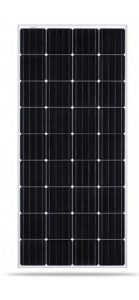
QUANTUM DOTS
Quantum dot solar cells generate power by utilising quantum dots, which are microscopic particles of various semiconductor materials and measuring only a few nanometers across. Thanks to quantum dots, the processing of semiconductor materials can now be done in a novel way.
Because it is difficult to establish an electrical connection between the dots, this method is not very effective. On the other hand, they are simple to fabricate into solar cells. They can be deposited onto a substrate using a spray, roll-to-roll printers, or the spin-coat process. Roll-to-roll printers are similar to the ones used to print newspapers.
Quantum dots can collect light that is difficult to capture and can be paired with other semiconductors. Since quantum dots come in various sizes and their bandgap can be customised, they can do both of these things. Which optimises the performance of a multijunction solar cell.
CONCENTRATION PHOTOVOLTAICS
Concentration photovoltaic energy, commonly known as CPV, is generated by directing sunlight directly onto a solar cell through a lens or mirror. Concentrating the sun’s rays on a smaller region makes it possible to use less PV material.
When light is focused on a smaller area, the photovoltaic (PV) materials within the material become more efficient; hence, CPV cells and modules produce the best overall efficiencies. However, because of the requirement of using more expensive materials, manufacturing procedures, and the capacity to follow the sun’s movement, it has become difficult to demonstrate the essential cost advantage over today’s high-volume silicon modules.

The Fundamentals of Solar Photovoltaic System Design
A comprehensive photovoltaic (PV) system is comprised of several different components; solar photovoltaic modules are just one of those components. These modules are where the electricity is generated. It is necessary to implement various additional technologies before the generated electricity may be put to use in a residential or commercial setting.
Mounting structures for integrating PV
Mounted on a sturdy and long-lasting framework, structures that can hold the PV arrays and resist exposure to elements such as wind, rain, hail, and corrosion. These buildings tilt the photovoltaic array at a predetermined angle based on the local latitude, the orientation of the structure, and the amount of electrical load required. The modules in the northern hemisphere are oriented. They face due south and are tilted at an angle equal to the local latitude to produce the best possible annual energy output. Rack mounting is currently the most popular approach since it is strong, can be used for various purposes, and is simple to manufacture and set up. Methods that are both more advanced and more cost-effective are continuously being developed.
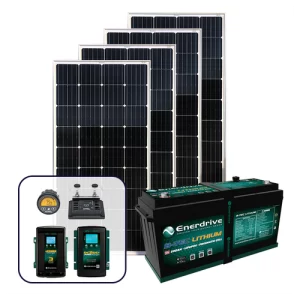
When it comes to photovoltaic (PV) arrays installed on the ground, tracking devices automatically move panels with the sun. This results in increased energy production and a greater return on investment. Generally speaking, one-axis trackers are intended to follow the sun from east to west as it moves across the sky. Two-axis trackers allow modules to maintain their orientation concerning the sun throughout the day. Tracking entails higher initial expenses. More complex systems are more expensive and require more upkeep. The cost-benefit analysis progressively favours tracking for ground-mounted devices due to the progression of system improvements.
Building integrate PV
Solar modules can be installed in specific mounting structures. Still, they can also be directly integrated into building elements such as roofs, windows, or facades. When solar panels are integrated into buildings, it is possible to minimise the cost of the system by making use of the building’s preexisting support structures and construction systems. This could also increase the efficiency of the material and supply chain. Building-integrated photovoltaic systems are the name given to these systems (BIPV).
BIPV systems have the potential to provide power for direct current (DC) applications in buildings, such as LED lighting, computers, sensors, and motors. Additionally, these systems could support grid-integrated efficient building applications, such as the charging of electric vehicles. Several commercial and technical obstacles still hinder the widespread adoption of BIPV systems. Still, these systems own their own distinct value, making them a potentially useful alternative to more conventional mounting structures and building materials.

Intergrating Inverters
In photovoltaic (PV) systems, the electricity generated by all modules may be sent into a single inverter, or microinverters may be added to each module. Inverters are necessary for transforming the direct current (DC) electricity produced by solar photovoltaic modules into alternating current (AC) electricity. Alternating current (AC) electricity is utilised for both the local transmission of electricity and the majority of the home appliances that we use.
In most cases, a single inverter will be less expensive. It will also be simpler to cool and service if maintenance is required. The microinverter makes it possible for each panel to be operated independently, which is helpful in various scenarios, including those in which specific modules might be shaded. During the lifetime of a PV array, which is typically 25 years, it is reasonable to anticipate that at least one of the inverters will require replacement.
Two-way communication between an inverter and an electrical utility is made possible by technologically advanced inverters, also known as “smart inverters.” This can assist balance supply and demand automatically or by remote connection with the operators of electricity companies. Costs can be cut, grid stability can be maintained, and the likelihood of power outages can be reduced significantly if utilities can get this insight into (and possibly manage) supply and demand.
Storage
Batteries not only have applications in private residences, but they are also playing an increasingly significant part in the operation of utility companies. Batteries make it possible to store energy produced by solar photovoltaic panels. Enabling us to use that energy to power our houses during the night or during periods of inclement weather when sunlight cannot reach PV panels.

Batteries can store excess solar power fed back into the grid by consumers. This power can then be given back to customers at a later time. Increasing the usage of batteries will contribute to the modernisation and stabilisation of the electric grid in our country.
The Fundamentals of Producing Solar Photovoltaics
Manufacturing in the solar industry refers to producing goods and components at every stage of the solar supply chain. Even though some concentrating solar-thermal manufacturing does take place in the United States, the vast majority of solar manufacturing is associated with photovoltaic (PV) systems.
All components making up these systems, including the photovoltaic modules, the racking and wiring, the power electronics, and the system monitoring devices, are made.
PV Module Manufacturing Silicon PV
Crystalline silicon is used as the absorber material in the vast majority of PV modules available for retail purchase. These modules need several distinct manufacturing stages that are usually executed in isolation.
Manufacturing of Polysilicon
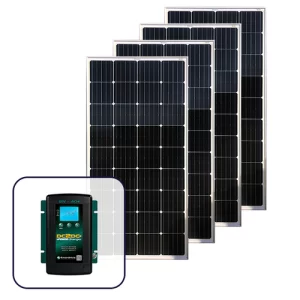
Polysilicon is a kind of crystalline silicon that is highly pure and has a very tiny grain size. It can be produced in the form of rods or beads, depending on the manufacturing process. Metallurgical-grade silicon, which can be derived from quartz sand, hydrogen, and chlorine, is the primary ingredient. Required for synthesising polysilicon is often produced using processes that rely on highly reactive gases. The silicon-hydrogen-chlorine combination gas is passed over a heated silicon filament in one procedure known as the Siemens process. This breaks the molecular bonds and deposits the silicon atom on the filament, eventually growing into a substantial U-shaped polysilicon rod. In a process that repeats itself, hydrogen and chlorine atoms are recycled.
The high-purity polymer and the filament itself are manufactured of pure silicon so that the filament does not introduce any impurities into the polymer. Tiny beads made of silicon are placed at the base of a vessel in the shape of an upside-down cone. A gas mixture consisting of silicon and hydrogen is then pumped into the vessel, which causes the tiny beads to rise to the surface and float near it. Because of the vessel’s heating, the bonds between silicon and hydrogen are broken. This leads to the silicon atoms depositing onto the little beads until they become too heavy to float and sink, where they may be harvested and prepared for use.
Manufacturing of Ingots and Wafers
The polysilicon is first placed inside a container. Thus, transform polysilicon into wafers. And then subjected to heating until it turns into a liquid mass. One method for growing monocrystalline silicon is known as the Czochralski process. In this method, a giant cylindrical ingot of monocrystalline silicon is developed by gently placing a tiny crystalline seed on the surface of the liquid and then gradually dragging it higher.
In a different method referred to as directional solidification, the liquid mass is gradually cooled until it begins to solidify from the bottom up. Forming a large-grained multi-crystalline-silicon ingot. After that, diamond-coated wire saws slice the silicon ingots into wafers of excellent thickness. The term “kerf” refers to the silicon sawdust produced during the process. A kerf less wafer can be produced in one of two ways. Either by pulling cooled layers off a molten silicon bath or by using gaseous silicon compounds to deposit a thin layer of silicon atoms onto a crystalline template shape of a wafer. Kerfless wafer production is less common, but it is still possible.
Cell Fabrication
The initial process involves the removal of saw marks from the surface of the wafer. And enhancing the light absorbed by the wafer when it is subjected to natural light. Following this step, solar cells are produced from silicon wafers. The subsequent processes are very different, depending on the device’s design.
The vast majority of cell types demand that the wafer be subjected to a gas that contains an electrically active dopant. The wafer surfaces are coated with layers that enhance the cell’s performance. Screen printing of silver metallization for use as electrical connections is another practice that is extremely widespread throughout cell types.
The production of the Module Assembly.
Tabbing and stringing is a process in a facility that assembles modules. This technique involves connecting the silver busbars on the front surface of one cell to the silver busbars on the rear surface of a neighbouring cell using copper ribbons. An interconnected set of cells has been arranged with their faces down.
After the face-down cells have been covered with a second film of the encapsulant, a resilient polymer back sheet or an additional piece of glass is then placed on top of them. After being laminated in an oven to make the module watertight, the entire material stack is fitted with an aluminium frame and edge sealant. And a junction box in which the ribbons are connected to diodes that prohibit any backwards passage of electricity. The current produced by the module is transported via electrical wires coming from the junction box to either a neighbouring module or the power electronics of the system.
Production of thin-film photovoltaics
The term “thin-film PV” can refer to various absorber materials, with cadmium telluride being the most prevalent (CdTe). Modules made from thin-film photovoltaics are typically processed as a single unit from the beginning to the end. Each step takes place in the exact location. In most cases, the production procedure begins with float glass that has been covered with a transparent conductive layer. Next, the photovoltaic absorber material is deposited onto the float glass using a technique known as close-spaced sublimation.
The employment of a laser allows for the patterning of cell strips. And the formation of an interconnected pathway between cells that are near to one another. The stack is laminated, copper ribbons adhere to it, an encapsulant sheet and the second sheet of glass are placed on top of it, and it is made waterproof. At long last, a junction box is fastened to the module’s bottom rear side. In this location, electrical cables are connected to the copper ribbons. Which are then routed into the junction box via the holes in the rear glass.
Racking Systems
Racking systems are the common name given to the structures designed to hold photovoltaic modules in place, whether they are installed on a roof or in an open field. There is a substantial amount of variation in the production of photovoltaic racking systems caused by the installation location. Steel, which is usually coated or galvanised to protect it from corrosion, is used in the construction of ground-mounted racking, which necessitates concrete foundations. Large ground-mounted systems often use a technology known as one-axis tracking, which assists solar panels in tracking the sun as it travels from east to west.
The kind of roof must be considered while installing roof-mounted racking. To track, you need mechanical components such as motors and bearings. Racking, more often known as “fixed tilt.” Steel racking with a fixed tilt is typically utilised on flat roofs, such as those seen on large commercial or industrial structures. It is typically fastened to big blocks that are positioned atop the roof. Racking is constructed to firmly attach to the rafters of pitched residential roofs to support the modules a few inches above the roof’s surface. Because of this, airflow can cool the back of the modules, which improves the modules’ performance.
Electronics of Power Supply
Electronic components, such as power optimizers and inverters, are constructed on printed circuit boards for use in photovoltaic modules. Direct current (DC) power, produced by a solar panel, is changed into alternating current. Which is used by the electrical grid. This hardware does this conversion.
The circuit board template is the first step in the assembly process. Using robotics, tiny components such as transistors and diodes are positioned. Then a solder-paste pattern is printed over those areas. When working with more significant components, like capacitors and transformers, arranging them by hand on the board is sometimes necessary. It is moved through a solder bath inside a furnace to connect the components. The entire circuit board has a lacquer coating. It is encased in a casing sealed against water and has ports for external connections.











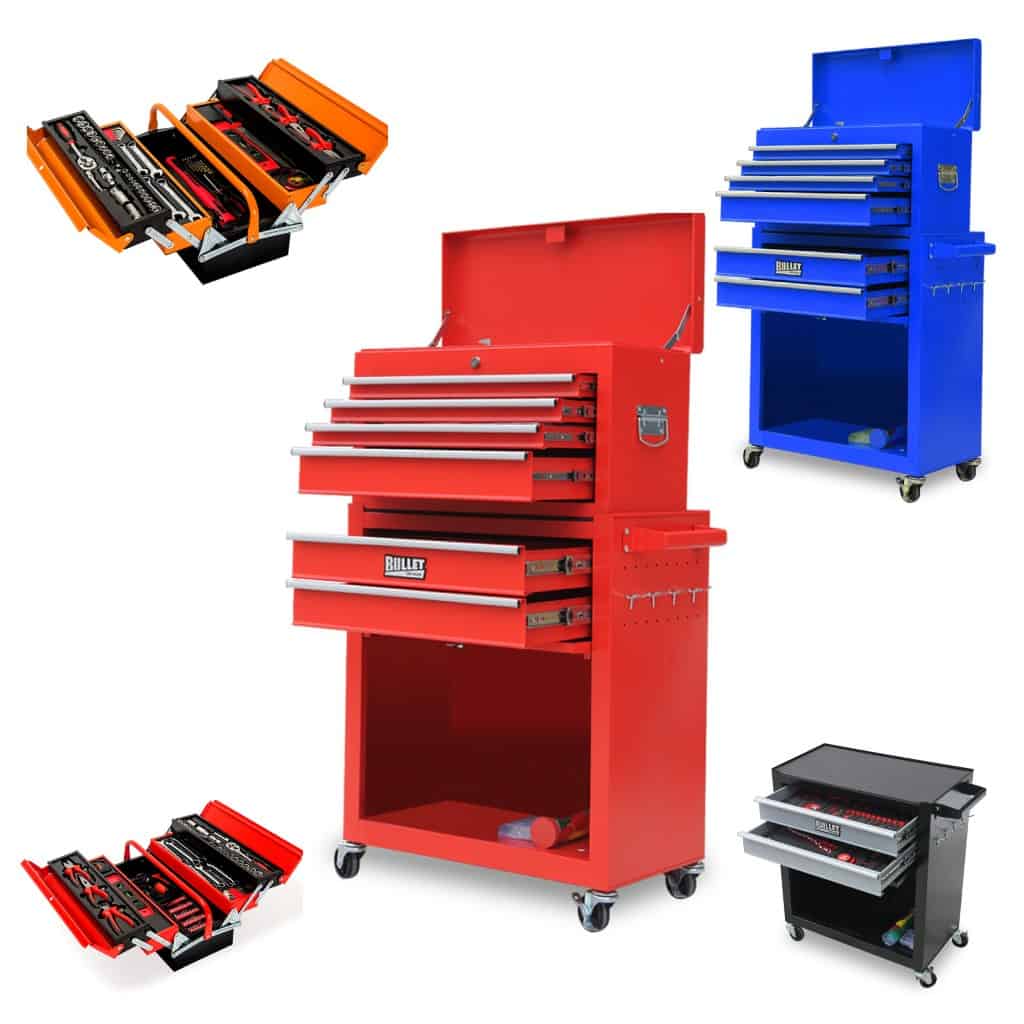

3 comments on “Off Grid Solar System Australia – Basics Explained and Buyers Guide”